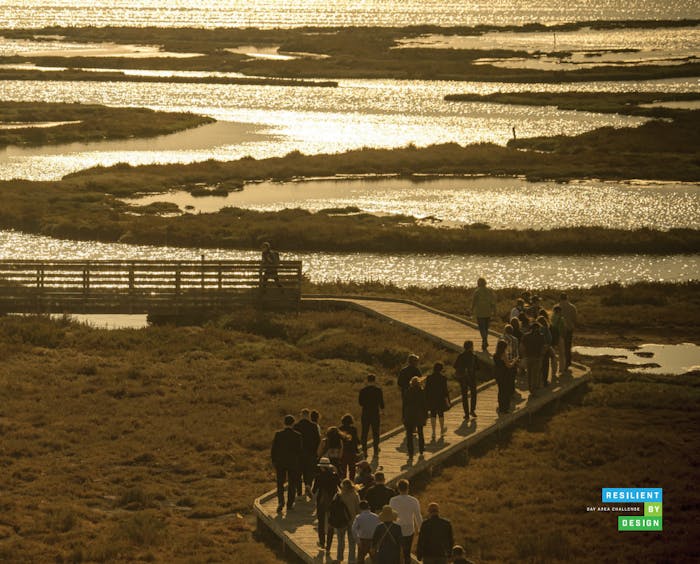Program Overview
As flood risks increase due to intensified severe storms and sea level rise, organizers of the Bay Area Challenge asked the question - can the Bay Area come together to shift its course and build a more resilient region before a big disaster hits, and can we address other regional challenges along the way?
The premise of the Resilient by Design | Bay Area Challenge (RbD) was both simple and audacious. As flood risks increase due to intensified severe storms and sea level rise, organizers asked the question - can the Bay Area come together to shift its course and build a more resilient region before a big disaster hits, and can we address other regional challenges along the way?
The exchange of knowledge, relationships built, and ideas generated by the Resilient by Design | Bay Area Challenge have inspired, activated, and informed individuals and institutions throughout the region to take seriously the threat of climate change. The regional momentum generated will continue on as communities work together to build resilience, implement Resilient by Design projects and address sea level rise and climate change impacts around San Francisco Bay. However, the work to take on such an enormous challenge is just beginning.
Source: Resilient by Design | Bay Area Challenge
Resilient by Design has recently released a book that describes the Bay Area Challenge process - download a free copy here.

 03 Good Health and Well-being
03 Good Health and Well-being
 09 Industry, Innovation and Infrastructure
09 Industry, Innovation and Infrastructure
 11 Sustainable Cities and Communities
11 Sustainable Cities and Communities
 13 Climate Action
13 Climate Action